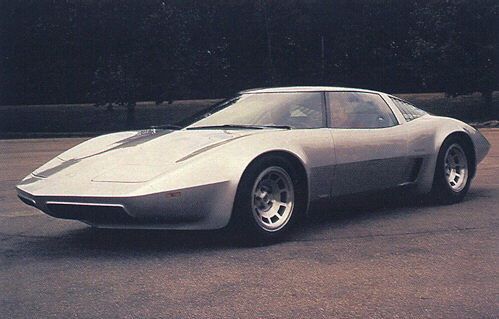With the official unveiling of the Corvette ZR1 at the Detroit Auto Show a done deal, speculation is now turning to the next generation car, the C7. Persistent rumors have it as a mid-engine vehicle, though claims earlier this fall that the mid-engine layout had been locked in have, at least on the surface, turned out to be false.
Indeed, it appears Chevy is very far from producing a successor to the C6, though there’s an inconsistency between what they’re saying publicly and that to which GM committed in the recent contract with the UAW.
Corvette’s chief engineer, Tadge Juechter, has told AutoOberver.com that the mid-engine concept is still under study, along with other possibilities. “Nothing is off the table (right now),” he said. “You hear ‘mid-engine’ every time there’s going to be a new-generation Corvette. There’s no firm decision. It’s still far enough out that we’re not even working on . My job is to find the correct technical solution.” (The Corvette “Four-Rotor” of the Seventies, pictured, was one such concept from Corvette’s past.)
Though Juechter told AutoObserver that objections to a mid-engine layout are not “necessarily” based on cost, it does appear that cost is a big objection. Estimates put the necessary price of a mid-engine vehicle at above even the $100,000 price tag of the ZR1. Many in GM believe that pricing a new Corvette at such a high level is completely inconsistent with the model’s heritage and market, not to mention maintaining sales volume.
According to AutoObserver, one case study in opposition to a mid-engine Corvette is the late Ford GT, which went for $140,000. It is believed Ford lost money on every one sold.
Several months ago, AutoExtremist.com produced a report by Peter DiLorenzo which flat-out said that approval for a C7 as a mid-engine car was almost a done deal, with final approval expected by this past October. Though some websites, among them AutoObserver, questioned the report, DiLorenzo insisted it was based on personal conversations with GM officials.
One possible exception may come from statements, over the past several months, made to the press by GM Vice-Chairman Robert Lutz. Lutz has several times indicated that GM product plans were “on hold” due to uncertainty about future fuel economy regulations. Most recently, he said that GM would be starting over the entire future product planning process if the 35 mpg standard became law – a statement made only days before the compromise bill setting that standard was adopted in Congress.
It seems possible that GM may have miscalculated the political landscape, and had been anticipating the ability to keep any increase in fuel economy standards to a more manageable level. If, as experts predict, meeting the new standards by 2020 will be hard to do, GM is likely to be less interested in devoting either development money or engineering talent to development of a new Corvette by 2012 – it just won’t be a priority. GM may, in fact, have made plans which it is now reevaluating, even cancelling, in light of the new legislation.
The 2012 target date for a new Corvette had received a big boost when the details of the GM-UAW contract were released in November, details which indicated that a new transmission was planned for a new vehicle matching the description of the Corvette’s market slot and which suggested that Pontiac Solstice production would eventually shift to the Bowling Green, Kentucky assembly plant where the Corvette is built. Those and other commitments made in the contract with the UAW suggested to most observers, both in the industry and among journalists, that GM had specific and well-advanced product plans, such that it could make firm commitments about what it would build and where it would build it.
But, Juechter’s remarks to AutoObserver – particularly the statement that determining configuration is so far in the future that it’s not even being currently worked upon – suggest that the 2012 timetable for a C7 is longer than 2012. That, of course, would be completely consistent with Lutz’s most recent remarks.
So the new ZR1 may be the “King of the Hill” for some time to come.

